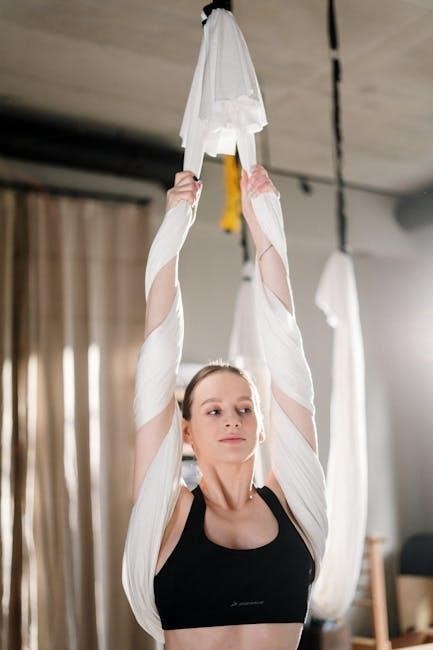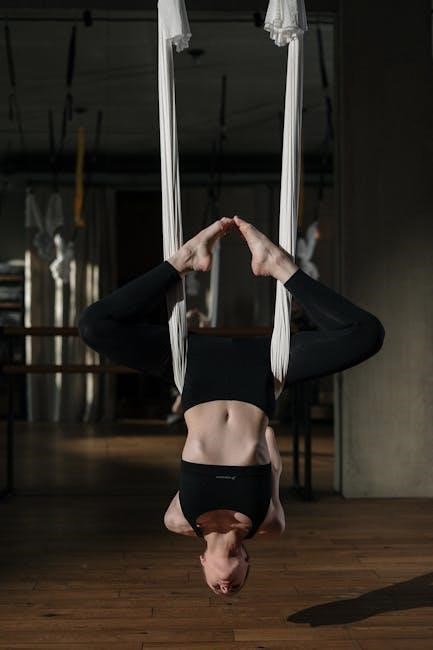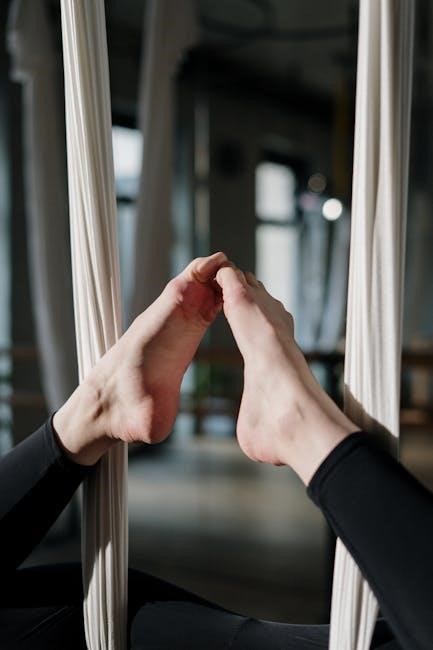Air Optix MF lenses are monthly replacement contact lenses designed for comfort and clear vision. This guide provides step-by-step instructions for proper fitting, ensuring optimal comfort and eye health.
What Are Air Optix MF Contact Lenses?
Air Optix MF contact lenses are monthly replacement lenses designed for comfort and clear vision. Made from a silicone hydrogel material, they allow for high oxygen permeability, promoting healthy corneas. These lenses feature a smooth surface and advanced moisture retention properties, reducing irritation and dryness. They are available in a range of powers, including options for astigmatism and presbyopia. Air Optix MF lenses are known for their aspheric optics, which enhance visual clarity and reduce glare. Suitable for daily wear, they combine durability with excellent optical performance. With proper care, these lenses provide a comfortable and reliable solution for individuals seeking clear vision correction. Their unique design ensures minimal lens awareness, making them ideal for both new and experienced contact lens wearers.
Benefits of Air Optix MF Lenses
Air Optix MF lenses offer numerous benefits, including exceptional comfort and clear vision. Their silicone hydrogel material ensures high oxygen permeability, promoting healthy corneas and reducing the risk of eye irritation. The lenses feature a smooth surface and advanced moisture retention, minimizing dryness and discomfort throughout the day. With aspheric optics, they provide sharp vision and reduced glare, enhancing visual clarity in various lighting conditions. Air Optix MF lenses are versatile, catering to individuals with astigmatism, presbyopia, and myopia, offering a comprehensive range of prescription options. Their durability and monthly replacement schedule make them a convenient choice for many wearers. Overall, these lenses combine comfort, optical quality, and ease of use, making them a popular choice for those seeking reliable contact lens solutions.

Understanding the Importance of Proper Fitting
Proper fitting ensures optimal comfort, clear vision, and eye health. It prevents discomfort, blurred vision, and potential eye infections, making it crucial for successful lens wear.
Why Proper Fitting is Crucial
Proper fitting is essential to ensure that Air Optix MF lenses provide optimal comfort and vision clarity. When lenses are fitted correctly, they align with the shape of the cornea, reducing the risk of discomfort, blurred vision, and eye irritation. Improper fitting can lead to a range of issues, including poor oxygen supply to the cornea, which may cause discomfort or even infections. Additionally, a well-fitted lens stays centered, ensuring consistent vision and minimizing movement-related irritation. Proper fitting also helps in maintaining the health of the cornea by preventing excessive pressure or rubbing. This attention to detail ensures that the lenses fulfill their intended purpose effectively and safely.

Consequences of Improper Fitting
Improper fitting of Air Optix MF lenses can lead to significant discomfort and potential eye health issues. Poorly fitted lenses may cause irritation, redness, or dryness due to improper oxygen supply or excessive movement. They may also fail to center correctly, leading to blurry vision and inconsistent visual clarity. Additionally, improper fitting can increase the risk of corneal abrasions or infections, as the lens may not align properly with the eye’s surface. Over time, this can result in chronic discomfort and dissatisfaction with lens wear. In severe cases, improper fitting may lead to complications that require medical attention, such as corneal ulcers or vision-threatening infections. Ensuring proper fit is crucial to avoid these potential issues and maintain long-term eye health and comfort.

Preparation for Fitting Air Optix MF Lenses
Preparation involves a comprehensive eye examination, reviewing patient history, and selecting appropriate lens parameters to ensure optimal fit and comfort for Air Optix MF lenses.
Initial Consultation and Examination
The initial consultation begins with a thorough patient history review, discussing lifestyle, vision needs, and previous contact lens experience. A comprehensive eye examination follows, assessing corneal health, tear quality, and refractive error. The practitioner evaluates the patient’s ocular surface to ensure suitability for Air Optix MF lenses. This step is crucial for determining the right lens parameters and addressing any potential issues early on. The examination may include keratometry to measure corneal curvature and biomicroscopy to inspect the anterior segment. The findings guide the fitting process, ensuring a personalized approach for optimal comfort and vision clarity with Air Optix MF lenses.
Patient History and Lifestyle Assessment
A comprehensive patient history and lifestyle assessment are essential for successful Air Optix MF lens fitting. This step involves gathering detailed information about the patient’s ocular and medical history, including any previous eye conditions or surgeries. Lifestyle factors, such as occupation, hobbies, and environmental exposures, are evaluated to determine how they may impact lens wear. For example, individuals working in dusty environments or those with active lifestyles may require lenses with enhanced durability. Additionally, personal preferences, such as handling comfort and care routines, are considered to ensure the patient’s needs are met. This assessment helps tailor the fitting process, ensuring the lenses align with the patient’s unique requirements for optimal comfort and vision clarity.
Choosing the Right Lens Parameters
Choosing the right lens parameters for Air Optix MF lenses is critical for ensuring optimal fit, comfort, and vision. Key parameters include lens power, diameter, and base curve, which must align with the patient’s specific eye measurements. Lens power corresponds to the patient’s prescription, correcting nearsightedness, farsightedness, or astigmatism. The diameter ensures proper fit on the cornea, while the base curve matches the shape of the eye for comfort. Additionally, factors like lens material and moisture content are considered to suit the patient’s lifestyle and tear chemistry. Accurate lens parameter selection prevents complications such as discomfort, blurred vision, or lens displacement. An eye care professional uses advanced tools, such as a keratometer, to measure these parameters precisely. Proper alignment ensures the lenses move naturally with the eyes, promoting long-term comfort and clear vision.

The Fitting Process
The fitting process involves a thorough assessment of the patient’s eyes, lens application, and evaluation of lens movement and comfort. Proper technique ensures optimal fit and vision clarity.

Step-by-Step Fitting Procedure
The step-by-step fitting procedure begins with a comprehensive eye examination to assess corneal health and vision needs. Next, the practitioner measures the eye’s dimensions, including keratometry and pupil size, to determine the correct lens parameters. The selected Air Optix MF lenses are then applied to the eyes, and their movement, centration, and coverage are evaluated. The patient is instructed on proper lens insertion and removal techniques to ensure safe handling. Comfort and vision clarity are assessed during the fitting, and any necessary adjustments to lens power or design are made. Finally, follow-up appointments are scheduled to monitor adaptation and address any concerns, ensuring long-term satisfaction and eye health;
Assessing Lens Movement and Centration
Assessing lens movement and centration ensures proper fit and functionality. The practitioner observes how the lens moves during blinking, ensuring adequate movement without excessive shift. Centration is evaluated to confirm the lens aligns with the pupil, providing clear vision. Proper centration prevents discomfort and visual distortions. The lens should not exhibit excessive edge lift or poor alignment, which could indicate improper fit. If movement is insufficient, it may cause irritation, while excessive movement can lead to instability. Adjustments to lens power, diameter, or design may be necessary. Accurate assessment ensures optimal comfort, vision, and eye health, making this step critical in the fitting process for Air Optix MF lenses.
Evaluating Comfort and Vision
Evaluating comfort and vision is crucial for successful lens wear. Patients should report any discomfort, dryness, or irritation. Vision clarity is assessed at distance, intermediate, and near to ensure optimal performance. The practitioner checks for any distortions or fluctuations in vision. Comfort is evaluated immediately and over time, as initial sensations may differ from long-term wear. Lens design and material, such as the SmartShield technology in Air Optix MF, play a significant role in maintaining ocular comfort. Proper hydration and surface wettability are also assessed to prevent dryness. If vision or comfort issues arise, adjustments to lens parameters or care routines may be necessary. This step ensures the lenses meet the patient’s needs for both clarity and comfort throughout the day.

Troubleshooting Common Fitting Issues
Common fitting issues include poor centration, lens discomfort, or blurred vision. Each problem requires specific solutions, such as adjusting lens parameters or recommending lubricating drops. Proper troubleshooting ensures optimal lens performance and wearer satisfaction.
Addressing Discomfort or Dryness

Discomfort or dryness with Air Optix MF lenses can arise from improper fit, insufficient lubrication, or environmental factors. To address this, ensure lenses are clean and well-maintained. Using artificial tears or rewetting drops can alleviate dryness. Reassessing the lens fit and recommending a different parameter, such as a higher water content lens, may be necessary. Proper hygiene practices, like avoiding makeup or dirty hands, can also prevent irritation. If discomfort persists, consider alternative lens materials or consultation with an eye care professional. Regular follow-ups are crucial to monitor adaptation and make adjustments as needed. Comfort and eye health should always be prioritized to ensure successful lens wear.
Resolving Vision Clarity Problems
Vision clarity issues with Air Optix MF lenses may stem from improper fit, lens deposits, or incorrect prescription strength. To resolve this, ensure lenses are clean and free from debris. Reassessing the fit and verifying the prescription accuracy is essential. If blurry vision persists, consider alternative lens designs or materials. Proper care and maintenance, such as using recommended cleaning solutions, can prevent buildup. Additionally, addressing conditions like astigmatism or presbyopia with specialized lenses may improve clarity. Regular consultations with an eye care professional are crucial to identify and correct any underlying issues. Clear vision is a key priority, and prompt adjustments can ensure optimal visual acuity and patient satisfaction.
Managing Lens Awareness or Irritation
Lens awareness or irritation can occur due to improper fit, lens deposits, or sensitivity to lens materials. To address this, ensure lenses are clean and free from debris. Proper cleaning and disinfection can reduce irritation. Assessing lens movement and centration during fitting is crucial to avoid discomfort. If irritation persists, consider reassessing the fit or exploring different lens parameters. Patient education on proper lens care and handling can also minimize issues. In some cases, alternative lens materials or designs may be necessary. Regular follow-ups with an eye care professional are essential to resolve persistent discomfort and ensure lens tolerance. Addressing these issues promptly can enhance wearer satisfaction and maintain eye health.

Special Considerations
Special considerations include fitting for astigmatism, presbyopia, or irregular corneas, as well as pediatric and geriatric cases, ensuring tailored solutions for unique eye care needs.
Fitting for Astigmatism or Presbyopia
Fitting Air Optix MF lenses for astigmatism or presbyopia requires careful consideration of the patient’s specific needs. For astigmatism, the lens must correct the irregular corneal shape, ensuring proper alignment and rotation. Presbyopia fitting involves addressing age-related focusing difficulties, often requiring multifocal or monovision strategies. The practitioner assesses the severity of the condition and selects appropriate lens parameters, such as cylinder power and axis for astigmatism, or add powers for presbyopia. Patient adaptation and comfort are prioritized, with follow-up appointments to monitor vision clarity and lens performance. Proper fitting ensures optimal vision correction while maintaining the comfort and health of the eyes.
Handling Irregular Corneas
Fitting Air Optix MF lenses for irregular corneas requires a tailored approach to ensure proper fit and comfort. Irregular corneal surfaces, such as those caused by keratoconus or post-surgical changes, can make lens adaptation challenging. The practitioner must carefully assess the corneal topography to determine the best lens parameters. Air Optix MF lenses, with their high oxygen permeability, can be a suitable option for promoting eye health during the fitting process. Trial lenses may be used to evaluate comfort and vision clarity. Proper centration and movement are critical to avoid discomfort and ensure optimal vision correction. Regular follow-ups are essential to monitor adaptation and make necessary adjustments, ensuring long-term comfort and visual acuity for patients with irregular corneas.

Pediatric and Geriatric Fitting
Fitting Air Optix MF lenses for pediatric and geriatric patients requires special considerations to ensure comfort and safety. For children, it’s essential to assess corneal health and ensure proper hygiene practices. Air Optix MF lenses, with their high oxygen permeability, can support healthy corneal development. Geriatric patients may have unique needs, such as presbyopia or dry eye symptoms, which must be addressed during the fitting process. The lens’s moisture-rich design can help alleviate dryness, while its stable fit ensures clear vision. Regular follow-ups are crucial to monitor adaptation and address any concerns. Proper patient education on lens care and handling is vital for both age groups to ensure successful and comfortable lens wear. Tailored fitting strategies are key to meeting the diverse needs of pediatric and geriatric patients.
Follow-Up and Aftercare
Regular follow-ups ensure optimal adaptation and comfort. Schedule check-ups to monitor lens performance and address concerns. Patient education on proper lens care and hygiene is crucial for long-term success.
Schedule for Follow-Up Appointments
After the initial fitting, follow-up appointments are essential to monitor adaptation and address concerns. Typically, the first follow-up is within 1-2 weeks to assess comfort and vision clarity. Subsequent visits are scheduled at 1 month, 3 months, and then annually. These check-ups ensure long-term eye health and lens performance. Patients should keep a log of any discomfort or vision issues to discuss during appointments. Regular follow-ups help maintain optimal lens wear and prevent complications. Proper scheduling ensures continuous care and maintains the health of the eyes while wearing Air Optix MF lenses.
Patient Education on Lens Care
Proper lens care is crucial for maintaining eye health and ensuring comfort while wearing Air Optix MF lenses. Patients should be educated on hygiene practices, such as washing hands before handling lenses and avoiding contact with water. Emphasize the importance of using the correct cleaning solution and avoiding expired products. Storage cases should be cleaned and replaced regularly to prevent bacterial growth. Patients should also be instructed to remove lenses before sleeping and to replace them as prescribed, typically monthly. Highlight the risks of improper care, such as infections or discomfort. Encourage patients to follow the manufacturer’s guidelines and seek advice if they encounter any issues. Proper education ensures safe and effective lens wear, promoting long-term eye health and satisfaction with Air Optix MF lenses.
Monitoring Adaptation and Satisfaction
Monitoring adaptation and satisfaction is essential to ensure successful lens wear. Schedule follow-up appointments to assess how well the patient has adjusted to Air Optix MF lenses. Evaluate comfort levels, vision clarity, and overall satisfaction during these visits. Pay attention to any feedback regarding lens awareness, dryness, or movement. Address any concerns promptly to maintain patient comfort and satisfaction. Use this opportunity to reinforce proper lens care and hygiene practices. If necessary, make adjustments to lens parameters or recommend alternative solutions. Patient feedback is invaluable for refining the fitting process and ensuring long-term success with Air Optix MF lenses. Regular monitoring helps build trust and ensures the patient’s needs are consistently met.
The Air Optix MF Fitting Guide provides a comprehensive approach to ensuring optimal lens wear. Proper fitting enhances comfort, vision, and overall patient satisfaction, making it essential for eye health.
Proper fitting of Air Optix MF lenses requires precise assessment of corneal curvature, pupil size, and iris diameter. Ensuring accurate lens parameters is crucial for optimal comfort and vision. The lenses should move slightly with each blink to maintain oxygen flow and prevent corneal irritation. Centration is key to avoid uneven pressure and ensure clear vision. Patient-specific factors, such as lifestyle and tear quality, must be considered. Regular follow-ups are essential to monitor adaptation and address any issues promptly. By adhering to these principles, eye care professionals can minimize complications and maximize patient satisfaction. Proper fitting not only enhances comfort but also preserves long-term eye health, making it a critical step in the lens-wearing experience.
Final Tips for Successful Lens Wear
For optimal comfort and vision with Air Optix MF lenses, prioritize proper hygiene by washing hands before handling lenses. Clean and disinfect lenses as directed, and replace them as prescribed to prevent complications. Attend all follow-up appointments to ensure proper adaptation and address any concerns. If discomfort or vision issues arise, contact your eye care professional promptly. Avoid sharing lenses or using expired care products, as this can increase infection risk. Store lenses in the provided case with fresh solution to maintain hygiene; By following these guidelines, patients can enjoy clear vision and long-term eye health with Air Optix MF lenses, making them a reliable choice for daily wear.
